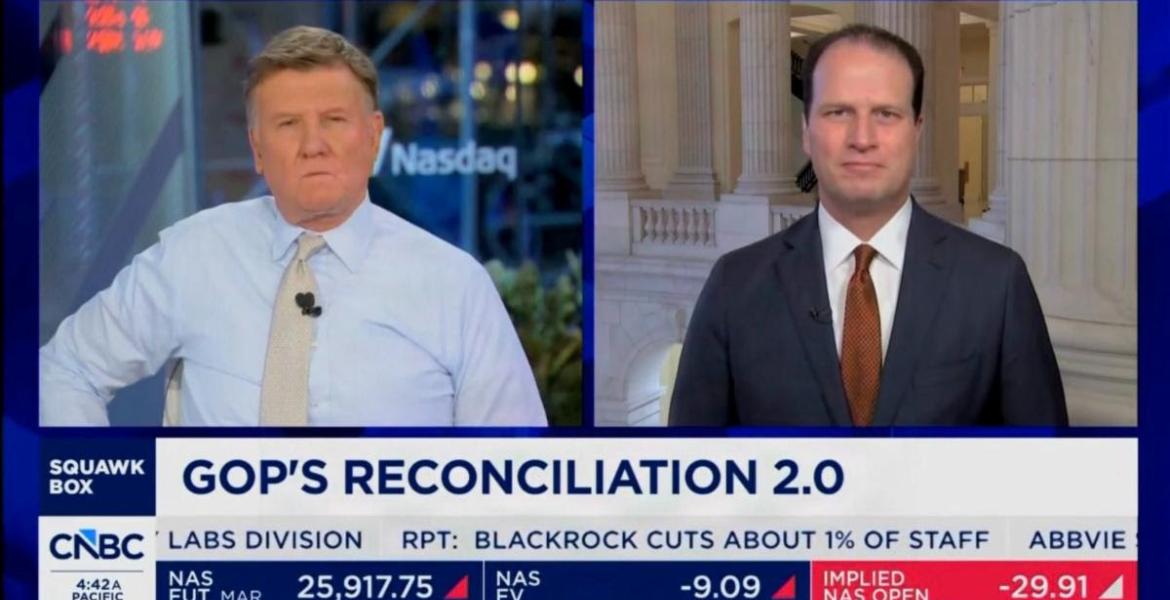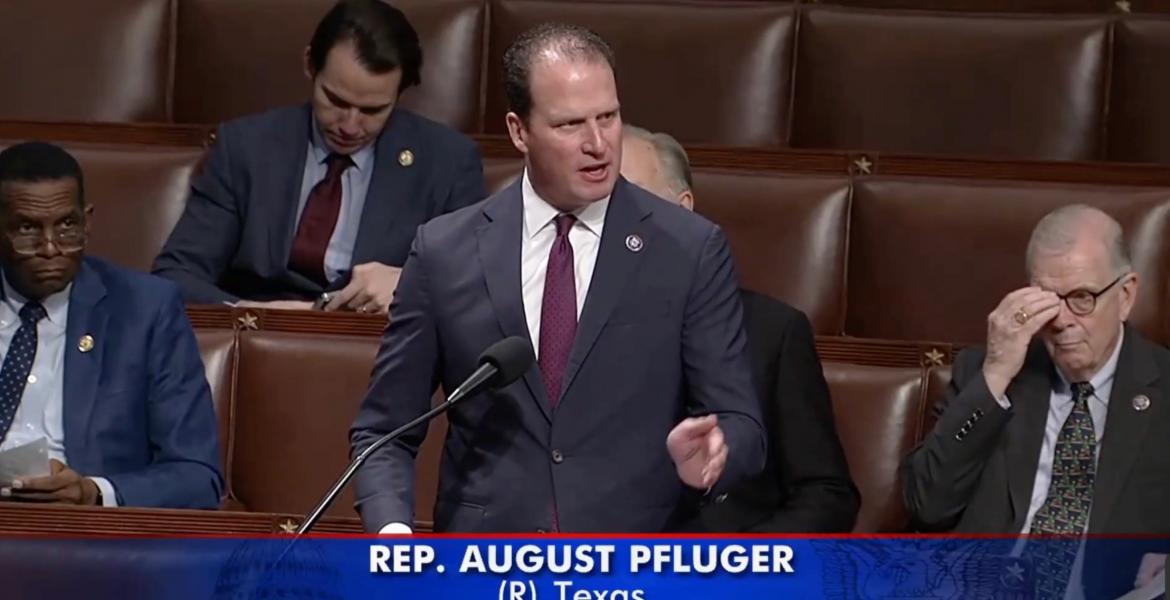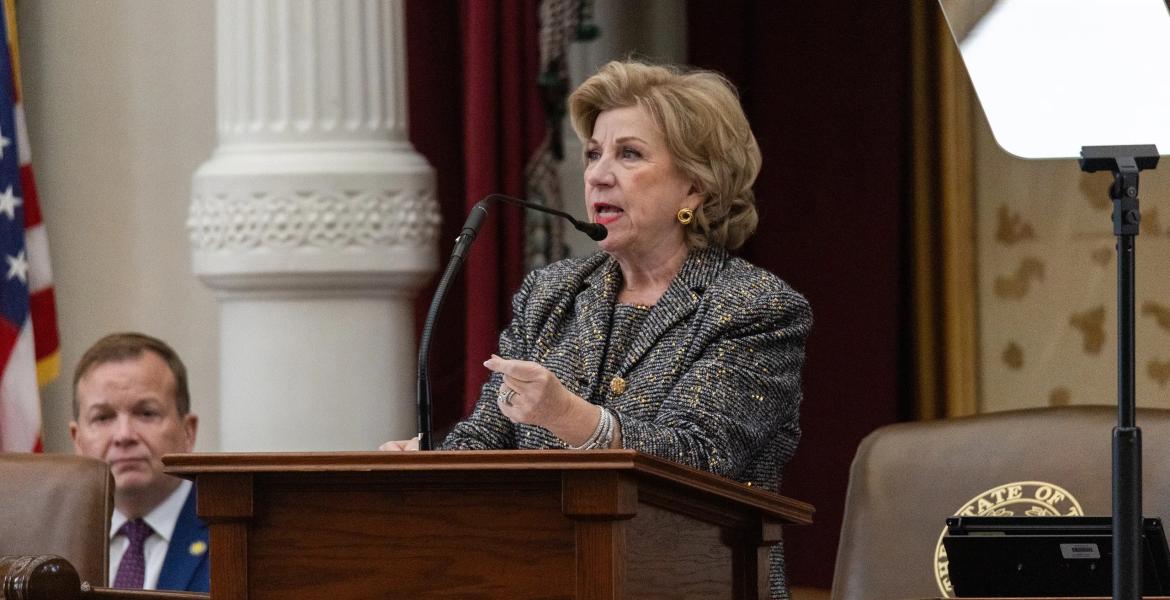About a decade or two ago, when officials with the City of San San Angelo Water Utility Services Department told citizens to conserve water because of drought conditions, they did so. However, when officials lifted those drought restrictions, the City saw a “bounce-back effect” where water users no longer conserved and resumed using the pre-drought water volume. As a result, water revenues increased, and the City had the good fortune of building cash reserves in the water enterprise fund.
Unfortunately, that’s no longer the case today because the city's citizens have adopted a strong water conservation ethic over a couple of decades, said Rick Giardina, executive vice president with Raftelis Financial Consultants, Inc., an agency that contracts with the City of San Angelo.
“Because we’ve built the ethic of conservation that doesn’t bounce back, we’re seeing a reduction in per capita use,” Giardina explained.
Additionally, because of this reduction in per capita use, San Angelo needs a long-term plan that will fix a long-term problem. Therefore, Giardina, along with members of the Water Advisory Board, presented the Water and Water Reclamation Cost of Service and Rate Design Study results to open a discussion on ways to move forward at Tuesday’s City Council Meeting held at the McNease Convention Center.
“This is not a recommendation as far as we’re concerned; this is an open discussion,” said Michael Boyd, chairman of the Water Advisory Board. “There are several variables, and we have to look at what those are and how we handle our future water.”
Giardina said not only was the meeting a way to have an open discussion, but he also hoped the Council could provide the Board direction as to where the City wants to go in regards to the financial plan and rate design for customers.
“The goal of this study and financial plan is to secure a sustainable financial future for San Angelo,” Giardina stated.
To determine how to get to this future, officials sought to answer the following questions:
- How much revenue is needed for utility sustainability?
- Who should be paying what?
- How should customers pay?
Unfortunately, the answer to those questions are complex, and the end result amounts to one thing: water rate increases. Not including reclamation fees, today the average City of San Angelo water customer pays $31.36 for the use of 4,000 gallons of water per month. But with the Utility Board’s recommendation presented Tuesday, the average user, by 2020, will pay $53.71, a 71 percent increase. The Board knows this increase will cause controversy with the public, but explained in depth why its conservative plan may finally fix the city’s water challenges.
[[{"fid":"14453","view_mode":"preview","type":"media","attributes":{"alt":"City of San Angelo rate changes proposed (contributed graphic, presentation Aug. 18, 2015 http://www.cosatx.us/Home/ShowDocum…)","title":"City of San Angelo rate changes proposed (contributed graphic, presentation Aug. 18, 2015 http://www.cosatx.us/Home/ShowDocum…)","height":"533","width":"1200","class":"media-element file-preview imgbody"}}]]
Above: Representative residential customers' water bill at different water volume usages, assumes a 5/8” Meter (Source, page 56 of the Water Adv. Board Powerpoint presentation available here.)
Water Utility Challenges
Today, the problem San Angelo Water Utilities Department faces is meeting annual revenue requirements (financial sufficiency), meeting and maintaining financial targets (financial sustainability), ensuring the future of the community and achieving a large capital expenditure in two to three years (water supply), and replacing aging infrastructure (rate of capital reinvestment).
Giardina explained, “We have to cover our costs. We have to meet our revenue points. We need to generate enough revenue each and every day to pay our bills, just like any of you at your households or at a business you own and operate. We also need to be thinking a little longer term towards financial targets as we undertake on a water supply project.”
To undertake such a project, Giardina said the price tag would be in the millions and the City of San Angelo will need to borrow that money. To borrow money, lenders want to be sure San Angelo has a sustainable financial future and that it can meet certain metrics.
Additionally, once the City undertakes this water supply project, more work has to be done.
“Our infrastructure will age,” Giardina said. “Every 5 to 10 years, you have to replace your car. Every 10 or 20 years, you have to replace the roof on your house. We have to replace the infrastructure on this utility periodically and that’s the nature of this business.”
The nature of the business also means revenue to the City's water enterprise fund must increase .
“There will always be revenue increases. I’m never hired to do a rate decrease. We don’t do that in this business,” Giardina stated.
The reason this isn’t done is because water is “the most capital intensive utility in the country, more than electric, natural gas and telecommunications,” he added.
“We’re in a business where we encourage people to use less of our product, and we have to be financially sound,” the contractor said.
To be financially sound, the utility has to see how it can cover its costs because when water consumption goes down 10 percent, because most of the water department's costs are fixed, those costs don’t go down. In fact, 90 percent of the Utility’s costs are fixed, Giardina said.
“The only costs that are variable are chemicals and power,” he noted.
As stated previously, the City had the good fortune of building reserves in the past, but Giardina said San Angelo has drawn down on those reserves because customers have used less water. This is not unusual, and what’s happening here is happening at other water utilities operations across the country.
“We’ve been building for a couple of decades a conservation ethic that has really taken hold,” Giardina added. “Layer on top of that drought restrictions, that drives down consumption even more.”
Overall, lower consumption benefits the city on a long-term basis and the water supply acquired in the short-term will last longer, but these situations now cause financial problems.
Revenue for Utility Sustainability
Today, the city’s revenues should meet or exceed the city’s costs. Giardina said the Water Utility is a business, and by government accounting, it’s an enterprise fund, which means the City's water utility should operate and stand on its own two feet.
“Our revenues should meet our cost, but they also should produce Days Cash on Hand, which is working capital, or the money we all need between that period for utility when we provide service and when we bill customers, collect revenue, and other measures of liquidity,” he said.
Also, the City needs debt service coverage, which is a measure that the City can use to pay back those entities that loan the City money, and do that within the enterprise fund without support subsidy from the general fund or other sources.
“So we’ve designed a financial plan that does this, a financial plan that will subsidize cost. We’re building. We’re not there today, but we will build over time to reach a goal of at least 75 days,” Giardina explained.
He also said some of the highest rated utilities in the business may have a liquidity of Days Cash on Hand for at least two years.
“This is something that rating agencies look at; the importance of the rating is the higher the rating in general terms, the lower the borrowing costs, the more that produces savings for our customers over the term of that debt, which is at least 20 years,” Giardina stated.
These are things that drive the financial plan, he added. Overall, capital is the main driver for the need of the utility and the consultant's water recommendation.
The Scenarios for Consideration
Because the Board, Council and contractors understand the problems that come with using the phrase “raise the water rates,” the consultants came up with three scenarios to show Council members, the Board and the public who attended the meeting.
In the first scenario, or “The Do Nothing” approach, the City will have adjustments and meet target, but it does nothing for infrastructure investment or about a future water supply project.
“I can tell you right now this is not a recommendation,” Giardina stated.
As for the second, or the “Maintain” scenario, the projection would fail to advance the City on a water supply solution, and it fails to generate enough revenue to offset costs. Additionally, Operations & Maintenance has a target of 75 days, but today the City sits at 20 days. Not to mention, if San Angelo does nothing about this, the debt account will be wiped clean in operations costs before any investment can be made into the water supply infrastructure.
Lastly, this scenario would not allow the City to repay the target $1.25 million in debt service coverage.
“To do nothing is not an alternative. We either need to cut costs dramatically or find new revenue sources,” Giardina said.
Therefore, the city only has two options: find a nice financial donor or raise rates, which leads to the preferred scenario, the “Moving Forward Plan.”
Under this plan, customer rate increases would fund critical infrastructure, which would help with main transmission and distribution as well as collection system improvements and water treatment plant improvements. It would also help the City achieve financial sustainability by eliminating operating deficits, work toward a 75-day cash for the Water fund and achieve DSC levels, according to the Board’s presentation.
In addition, the Plan would allow the City to borrow the largest amount possible for a water project at the lowest cost possible from the state. A future water support project would be funded with a $140 million price tag that would share funding responsibility from both water and water reclamation, and would begin over a two-year period.
"Move Forward" would also allow Water Utilities to use the ballot initiative, which was originally approved for projects like this. It would use $2.5 million per year, and in 2016 and 2017, the City would be “banking that money and putting it aside,” Giardina explained. By 2018, the department would repay a portion of the debt issued.
However, this would mean a 20 percent increase to water and water reclamation in 2016, and a 7.5 percent increase from years 2017-2020 with sales tax money, or a 20 percent increase in 2016, and a 10 percent increase from 2017-2020 if it's "all rate funded."
“The 20 percent, or the $10 increase starts us on a path to meeting our financial metrics and meeting all the goals we’ve been talking about,” Giardina said. “We didn’t get into this position of using all our existing reserves and drawing them down to this really low level; we didn’t get there overnight, so we shouldn’t try to fix this overnight.”
Giardina also said this plan is necessary if for no other reason than to borrow money and show lenders San Angelo is on the right path, and dealing with revenue deficiency is how the path begins.
“It also puts us on the path where our annual revenues meet or exceed our annual costs. With the increases we’re talking about over the next five years, that gets us to the goal of 75 days by 2020,” Giardina stated.
The Concerns about Raising Rates
Under the moving forward plan, the average bill of $31.36 would increase to $53.71 over five years as previously stated. The increase, although conservative, is a lot for consumers to take in, which Board members said they understand.
“We would all have different views as to the impact this has on customers, and what they may or may not have to give up to come up with the extra $10 a month,” Giardina said.
He also stated that he can’t say what the impact would be because rate raises affect people in different ways. However, for those people who would find $10 a lot of money, there are a number of City and County resources that help customers pay their utilities.
“There are opportunities for them. There is support out there,” the contractor said.
One suggestion provided to the board was possibly putting an option similar to Atmos energy where people can donate extra funds to help those customers who struggle to pay their water bill.
“It’s viable,” Giardina responded.
For Councilman Johnny Silvas, Single-Member District 3, he felt skeptical about the rate increase and the support available.
“I deal with a lot of folks who are low-income and the elderly in my district. What do I tell them?" Silvas asked. He also said he has not heard of the agencies mentioned, but would be interested in hearing about them.
Some of those agencies can be found by clicking here.
Kendall Hirschfield, a member of the Water Advisory Board, said he too worried about raising rates.
“What I’m concerned about is we keep hitting consumers with higher rates. The fees and rates just keep going up,” the Board member said. “The San Angelo economy is good, but it’s not vibrant the way it could, should and we hope it will be."
Councilwoman Elizabeth Grindstaff, SMD 5, said she wasn’t just concerned about the rates, but how we got to this place. She also stated that San Angelo has a problem with building things like water infrastructure and streets, and that the City has failed to maintain them.
“We can’t keep pushing this out into some distant future,” she said. “We have to address this now.”
For the Water Utility Board, this plan would help address the concerns plaguing the citizens of San Angelo.
For now, however, the plan is simply a “placeholder for a water supply portfolio,” and after Tuesday’s discussion, other avenues will be looked into to reduce the $10 or 20 percent increase the first year. Giardina said he hoped increases may start as early as January 1, 2016, but the Council said that might be pushing things. The plan is a good starting point, many of them said, but there will have to be more discussions and planning before the Water Utility Board and the City Council can finalize a possible five-year rolling plan that can be adjusted by future council members.
“We have to balance raising the rates and balancing the consumption rate,” Kendall said. “That’s my real fear. The ongoing increases. We can sell it. We can explain it; but, there’s something out there we can do to minimize that 20 percent. We need to do that.”
For more information about the Water Advisory Board Rate Study Results, click here.
Other Water News
In a separate session on the Regular Agenda, Water Utilities Director Bill Riley provided a discussion and asked for direction about water billing charges. Citizens have raised concerns about the $25 fee charged if a customer pays a bill on the 29th day of the billing cycle.
Mayor Dwain Morrison said he would prefer a 10 percent charge instead because he felt a $25 fee “punitive.”
“I think that fee hurts people who already have trouble. They wouldn’t be paying their bill late if they weren’t,” he said.
Farmer and Grindstaff, however, felt the late fee fair. Farmer said these fees are comparable to those people pay if they are late on a credit card payment, or on a rent or mortgage payment. It also wasn’t fair to people who did pay their bills on time.
After further deliberation, the council voted unanimously in the maintaining of the current late fee.
Subscribe to the LIVE! Daily
Required






Comments
Listed By: favian paul martinez
I didn't understand most of this article, but I guess what's important is that I know water rates are going up.
- Log in or register to post comments
PermalinkListed By: Doctor Ding-bat
Wouldn't it be fantastic if Donald Trump were to come to San Angelo to spread some of his wealth around... By this I mean, wouldn't it be a nice pipe dream if he offered to pay every resident $100,000 as a bonus to sell their homes and property for whatever they could get and move far far away from this money gouging group of idiots who run this ridiculously run city and let San Angelo become a ghost town......
- Log in or register to post comments
PermalinkListed By: Old Salt
Nobody minds paying higher taxes. That is what this is, but where everyone looses confidence is when its made out to be a crisis, then is quickly forgotten. Then in 10 years we are back to square one, and nothing was done with the infrastructure. The can we used to kick down the road, for our roads has disintegrated. What is the back log for current maint. to the city's water lines? How many cans do we have to kick down the road?
- Log in or register to post comments
PermalinkListed By: Concho Mike
A lot of residents in Angelo can barely afford to cover their bills now. Maybe if we stopped considering STUPID expenses like armored vehicles we wouldn't need such outrageous rate hikes. And aren't we about to get added tax dollars from the solar project? Maybe everyone should do a little civil disobedience and refuse to pay the bill until we see some roads get fixed, and I don't mean sealcoat either.
- Log in or register to post comments
PermalinkListed By: im watching
If they want to save money because we have become "good citizens of conservation"....get rid of the water nazi's (code enforcement). There's way to many of them to begin with and we could free up the salary being paid to them. Then, we can go back to wasting water and in turn, generate additional funds for the city. Makes about as much sense as the proposal.
- Log in or register to post comments
PermalinkListed By: T R
Question: If the water department is supposed to be self sufficient, does the city pay for water used when watering the parks or planting new grass in 100 degree weather and watering every day twice a day (one at 3:00 p.m.)? If it is supposed to be self funded, shouldn't the city receive a bill too? I know, it is the same, all comes from taxes, but if we have to absorb an increase shouldn't the city "pay" too?
- Log in or register to post comments
PermalinkListed By: T R
Sorry about the duplicate
- Log in or register to post comments
PermalinkListed By: Dora Raspu
What ever happened to all that money the city had in the water fund to fix water infrastructure (mains, pipes, etc) years ago? Ah yes, they used it to build the riverwalk to attract "tourism." Back in 2005 the city was crying about the crumbling water infrastructure. You see a pattern here? Keep coughing up that money to feed the sense of "urgency." Guess what? They'll keep kicking that can down the road, nothing will get fixed, you'll pay more in fees and rate hikes again. Wash, rinse, repeat. I say screw the city and its water "conservation" campaign. Citizens do the right thing and get the shaft. Leadership does the wrong thing and holds out their hands. It's already highway robbery that we pay so much in water fees, charges, funds, etc., for crap water that isn't even fit to drink. So from now on, since I'm paying for it anyway, I'm going to use all the water I want and watch the return of my green grass. Hey, keep it classy, San Angelo. have green grass and a beautiful back yard.
- Log in or register to post comments
PermalinkPost a comment to this article here: